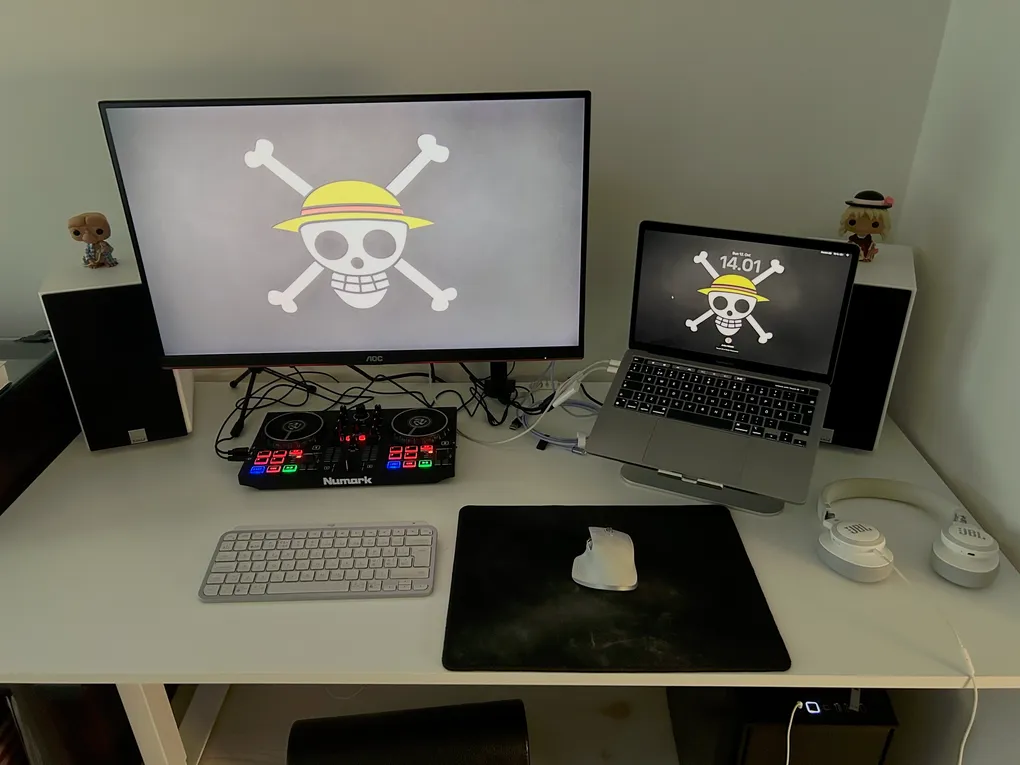Why I Wanted a Work From Home Developer Setup That Lasts
Working from home as a developer can be great — until your back, neck, or wrists start reminding you that your setup isn’t built for eight-hour days. Over the years, I’ve refined my home office into something comfortable, healthy, and genuinely productive. This breakdown covers the gear that has worked for me long-term and why each piece matters if you write code from home.
A Real Office Chair Will Save Your Back
The best investment in any home office is a proper ergonomic chair. Not a racing-style gamer chair, not a wooden dining chair — an actual office chair made for long sessions.
I use a black Isku office chair, and it’s the most important part of my setup. The lumbar support and adjustability make a huge difference during full workdays. If you upgrade only one item, start here.
A Height-Adjustable Desk Makes a Bigger Difference Than You Think
Being able to switch between sitting and standing keeps your posture fresh and helps with focus, especially during long coding or debugging sessions.
My desk is the Jysk Svaneke 70×140 cm electric model.
It surprised me in a good way: sturdy frame, smooth height adjustments, and large enough for a monitor, laptop, and extra gear. At around 200 euros, it was better built than I expected. If electric isn’t an option, at least get a manually adjustable desk — fixed-height tables get uncomfortable fast.
Keyboard and Mouse: Get Something Comfortable For Daily Use
Good peripherals make repetitive tasks easier and reduce wrist strain. I use the Logitech MX Keys and MX Master 3S, which I wrote about in another post. They work well together, feel solid, and make switching between multiple computers quick.
For long-term use, comfort matters more than flashy features.
The Monitor Setup: Prioritize Height and Adjustability
Any decent-sized, high-resolution monitor works for development, but the stand makes or breaks the ergonomics. If the included stand is limited, use a VESA monitor arm.
With an adjustable arm you can:
- set the correct eye height
- tilt and rotate the screen
- pull the monitor closer or push it back
My monitor is an AOC Q27G2E, which is enough for front-end work. The arm upgrade is what made the difference.
The Computers I Use Day-to-Day
I switch between a few machines depending on the task:
- MacBook Pro M1 — work machine
- MacBook Air M3 — personal use and travel
- Windows 11 desktop — gaming and testing
Logitech’s multi-device support makes transitions instant. One keyboard and mouse for everything keeps the desk clean.
Audio and Accessories That Improve Focus
A few extras make everyday work smoother:
- Speakers: DALI Zensor 1 — clean, clear sound
- Headphones: JBL Live 650BT and Samsung Buds 2 Pro for calls and music
- Microphone: Samson Q2U — great for meetings or recordings
- Cable trays and a laptop stand: keep the desk neat
- Massage roller: yes, really. I roll it around with my feet during long sessions. Keeps the blood flowing and breaks the monotony a bit.
Small details help more than you expect when you’re sitting in the same space every day.
Key Takeaways for a Developer WFH Setup
- A real office chair should be your first upgrade
- A height-adjustable desk keeps your posture healthier
- Good peripherals reduce strain during long sessions
- Monitor adjustability matters more than monitor specs
- Accessories like headphones, stands, and cable trays improve comfort
Final Thoughts
A work-from-home developer setup doesn’t need to be fancy — it needs to support you through full days of coding without pain. The right chair, adjustable desk, comfortable peripherals, and clean workspace make the work feel smoother and help you stay focused. Even small changes can build a setup that works for years, not months.

